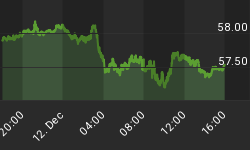
At the bottom of the financial crisis the Swedish government nationalized all banks that defaulted, restructured their debt, repackaged them and had them open for business by Monday. They literally used the Viking spirit to wash away the rot, they are a brave lot. Now in 2011 Sweden is the come back kid, unemployment is falling, GDP is up and the banks are lending to the middle class. Unlike USA where the opposite is true. If fact it is now apparent the USA is on the doorstep of another 'great recession', go figure!
Previous Posts
Charles Nenner and Harry Dent Jr 2012 cycle bears - Part One
Charles Nenner and Harry Dent Jr 2012 cycle bears - Part Two
Points from previous posts
- Nenner and Dent expect a market down turn in 2012/13
- Dent expects the Housing market to be the catalyst for the down turn
- Dr Gary Shilling says the housing market will fall another 20%
- When the above thinking is accepted the US Dollar could rally over several years.
Source: Are We Headed For A Second Recession?
Extract ... For Chart below
Finally, statistically speaking, the data suggest the definite possibility of a second recession and potentially sooner rather than later. Mark Thoma recently analyzed a graph of real GDP growth in an article for economitor.com. With the most recent release and revisions of the Gross Domestic Product data, the economy is currently growing at 1.6% on a year over year basis. As the graph shows - when growth declines below 2% GDP growth it has been indicative of a recession in the past. Almost every drop below this line has led to a recession measuring back to 1947. The question is now, since the Federal Reserve has been hoping for a turnaround in the third quarter, is whether another round of Quantitative Easing could turn the tide back in their favor.

So would QE3 save the day .. . Consider this opinion
Source: Reading the bond and stock market tea leaves
Once again these developments underscore supply-siders' belief that growth can only come from hard work and risk-taking. Monetary policy can't create growth out of thin air, and neither can fiscal "stimulus" spending. The swimming pool analogy is very apt: fiscal spending "stimulus" is akin to taking water out of the deep end of a pool and pouring it into the shallow end -- it achieves nothing and is simply a waste of effort. Real growth only occurs when people work more and/or someone figures out how to make the same amount of work produce more output.
If there is a silver lining to this gloomy GDP cloud, it is that fiscal and monetary policy "stimulus" have now been soundly discredited. Congress does not have the power to pull spending levers in order to speed up the economy, and the Fed can't speed up the economy by keeping interest rates at artificially low levels. In fact, fiscal and monetary policy errors of the sort we have lived with in recent years only serve to weaken the economy. Too much debt-financed spending only wastes the economy's scarce resources, while simultaneously boosting expected tax burdens. This in turn reduces the after-tax rewards to hard work and risk-taking, which explains why corporations have been so slow to invest their growing stockpiles of cash. Too much easy money only boosts speculative activity (which shows up as higher commodity and gold prices) while undermining the dollar and reducing investment.
COMMENTS: Sweden 1, USA 0
Nothing has changed and the SP500 cycle may have been delayed a few months, yet it is still on track to happen. When a country is heavy in debt, growth is always sub par, and recessions are more frequent. The Japanese are proof of that!

Prediction from Felix Zulauf of Zulauf Asset Management.."1100 on the S&P by the fourth quarter wouldn't be a surprise".. We concur!
















